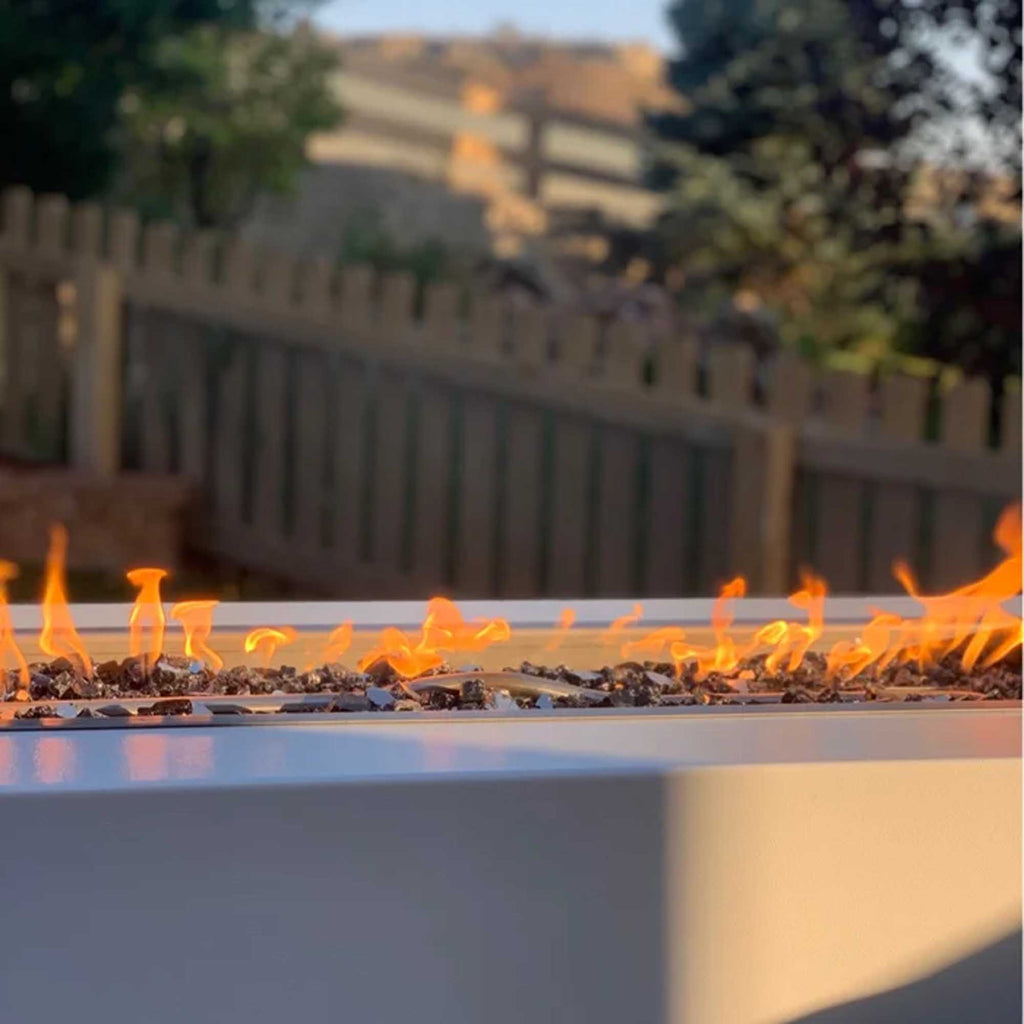Fire Pit Gas Line Installation For Your Backyard
A backyard fire pit is a fantastic way to enjoy your outdoor living space. Gas-powered fire pits provide a cozy atmosphere, warmth, and ambiance to your gatherings. However, to get the best performance from your fire pit, you need to make sure that your gas line is sized correctly. A gas line that is too small can lead to low heat output and poor performance, while a gas line that is too large can waste energy and increase costs. Let’s discuss the importance of gas line sizing for your backyard fire pit and provide a guide on how to determine the right size for optimal performance.
Factors To Consider When Running Natural Gas Lines For Fire Pits
Several factors influence gas line sizing for your backyard fire pit. These factors include the size of the fire pit, the BTU output of the burner, the length of the gas line, and the pressure of the gas supply.
Size of the Fire Pit Affects Gas Line Size
The size of your fire pit affects the amount of gas required to produce the desired heat output. Larger fire pits require more gas, while smaller fire pits require less.
BTU Output of the Burner
The BTU output of your burner is the amount of heat it produces. You can find this information in the product manual or on the manufacturer's website. Knowing the BTU output of your burner is crucial to determine the required gas flow rate.
Length of the Gas Line Underground
The distance between your gas supply and your fire pit can affect gas line sizing. The longer the gas line, the more pressure drop there will be, and the more gas required to achieve the desired heat output. As such, it may be necessary to increase the gas line size to compensate for the pressure drop.
Pressure of the Gas Supply In Hose
Most residential gas systems operate at a pressure of around 7 inches of water column (WC). The pressure of the gas supply is necessary to determine the required gas flow rate. If you are unsure of the pressure of your gas supply, you can contact your gas company to find out.
Calculating the Right Gas Line Size
Once you have considered the factors that influence gas line sizing, you can calculate the right gas line size for your backyard fire pit. Follow these steps:
Step 1: Determine the Required Gas Flow Rate
To calculate the required gas flow rate, use a gas flow rate calculator based on the BTU output of your burner and the pressure of your gas supply.
A gas flow rate calculator is a tool, device, or software application that calculates the rate at which a gas flows through a pipe, nozzle, or other conduit. The flow rate is typically measured in volume per unit of time (e.g., liters per minute or cubic feet per hour) or mass per unit of time (e.g., kilograms per hour or pounds per hour).
These calculators usually require certain inputs, such as the gas type, pressure, temperature, and pipe dimensions. Based on these inputs, the calculator uses mathematical equations, such as the ideal gas law or empirical correlations, to compute the flow rate.
Step 2: Determine the Appropriate Gas Line Size
Gas line sizing is measured in cubic feet per hour (CFH). You can use a gas line sizing chart to determine the appropriate gas line size based on the required gas flow rate and the length of the gas line. If you are unsure how to do this, consult a licensed gas fitter or plumber.
Generally, the most common gas line sizes used for residential fire pits are 1/2-inch or 3/4-inch diameter pipes. A 1/2-inch pipe can typically support fire pits with a BTU output of up to 100,000 BTUs, while a 3/4-inch pipe can accommodate higher BTU ratings. However, if the distance between the gas source and the fire pit is long, a larger diameter pipe might be needed to maintain adequate gas pressure.
It is essential to consult with a professional installer or local building codes to determine the appropriate gas line size for your specific fire pit installation. Proper sizing is crucial for the safe and efficient operation of the fire pit, as well as compliance with local regulations.
Additional Resources For DIY Fire Pits
If you're interested in learning more about gas line sizing for your DIY backyard natural gas fire pit, check out this ultimate guide to DIY fire pits.
Conclusion
Proper gas line sizing is critical to the performance of your gas-powered backyard fire pit. A gas line that is too small or too large can affect heat output, energy efficiency, and costs. By considering the factors that influence gas line sizing, such as the size of your fire pit, BTU output, length of the gas line, and pressure of the gas supply, you can calculate the right gas line size for your fire pit. Use a gas flow rate calculator and a gas line sizing chart to determine the appropriate gas line size, and consult a licensed gas fitter or plumber if you're unsure how to proceed. .

